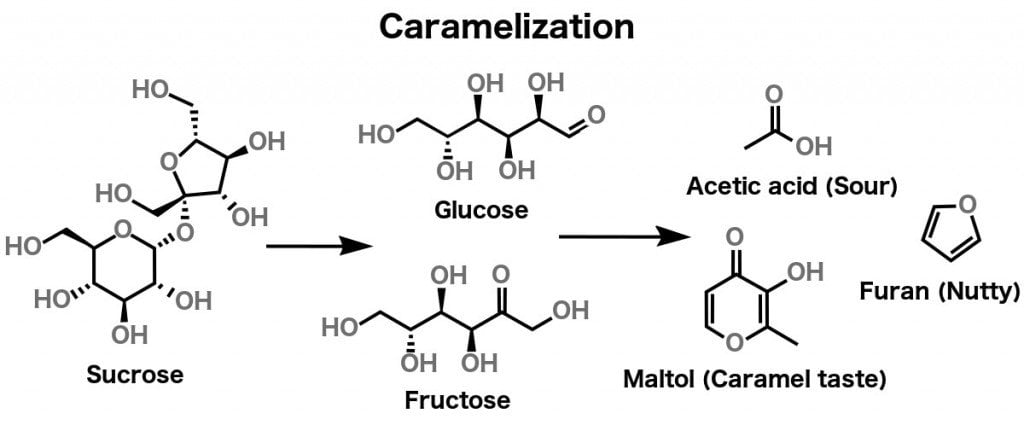Proteins and Enzymes¶
For protein structure, see biochem notes attached
Amino Acid Chart (For your Convenience)¶
Enzymes¶
Enzymes are proteins that catalyse reaction be lowering the activation energy \(\Delta G_{act}\). The do this by creating conformational changes in the reactants themselves and are thus not consumed in the process. Most enzymes catalyse reactions that bring together multiple reagents in the one active site
Browning¶
Browning occurs in two primary ways, enzymatic and non-enzymatic:
Enzymatic Browning¶
Is an enzyme (polyphenol oxidases [PPOs]) catalysed oxidation process that converts polyphenols (benzene rings with multiple \(\ce{-OH}\) substituents) into quinones that will further polymerise into melanin:
Since these process are enzymatically driven, they are sensitive to the operating conditions of the enzymes involved. for PPOs, these tend to be:
- pH - between 4.0 and 8.0 (apple is 4.5-5.0)
- Temperature ranges vary, though PPOs are typically denatured after 5 mins at 80\(^\circ\)C
Enzymatic browning is incredibly problematic for the value of agricultural products, however is vital for the flavour production of coffee and dried fruits.
Non-Enzymatic Browning¶
happens through two main pathways:
Caramelisation¶
Is the pyrolysis of sugars into various smaller, oxygen containing hydrocarbons
Maillard Reaction¶
Occurs between reducing sugars and amino acids, resulting in a reaction pathway that will degrade both int smaller organic compounds. Since the composition of the amino acids going in will be varied, the flavour of the products will vary accordingly.



